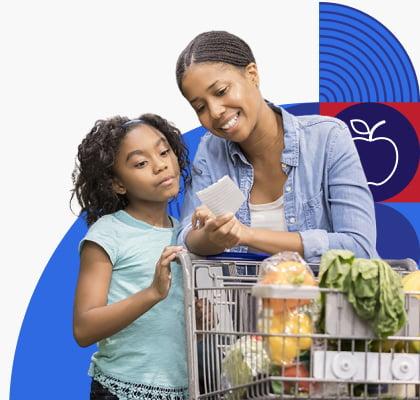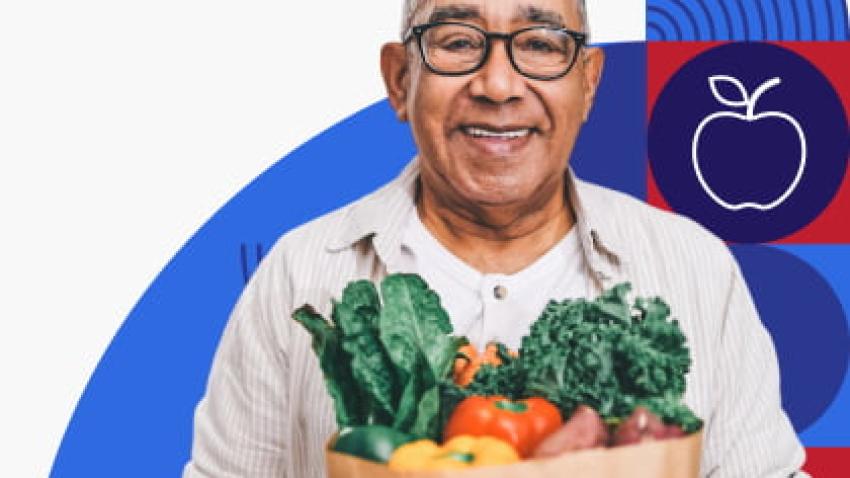Health Conditions
Lower-Sodium Foods: Shopping List

Most people eat much more sodium (salt) than they need. This can lead to health problems like high blood pressure. To lower the amount of sodium in your diet, follow these tips when you go food shopping:
- Choose fresh foods instead of processed or prepared foods when you can
- Use the Nutrition Facts label to check the amount of sodium, and try to choose products with 5% Daily Value (DV) or less — 20% DV or more is high
- Look for foods labeled “low sodium” or “no salt added”
Take the list below with you the next time you go food shopping to help you choose foods that are lower in sodium.
Vegetables and Fruits
Buy plenty of vegetables and fruits, like:
- Any fresh fruits, such as apples, berries, oranges, mangoes, and bananas
- Any fresh vegetables, such as broccoli, sweet potatoes, beets, okra, spinach, peppers, carrots, and edamame
- Frozen vegetables without added butter or sauce
- Canned vegetables that are low in sodium or have no salt added — you can rinse them off to remove some of the sodium
- Low-sodium vegetable juice
- Frozen, canned, or dried fruits with no added sugars
Whole Grains
Even foods that don’t taste very salty, like bread or tortillas, can still add a lot of sodium to your plate. Compare labels to find products with less sodium.
Here are some good options to try:
- Whole grains like brown or wild rice, quinoa, or barley
- Whole-wheat or whole-grain pasta and couscous
- Whole-grain hot or cold breakfast cereals with no added sugars, like oatmeal or shredded wheat
- Unsalted popcorn or low-sodium chips and pretzels
- Whole-grain breads, bagels, English muffins, tortillas, and crackers
Proteins
Choose fresh or frozen seafood, poultry, and lean meats instead of processed options, which often have more sodium. If the package has a Nutrition Facts label, look for 5% DV or less.
Choose options like:
- Fresh or frozen fish or shellfish
- Chicken or turkey breast without skin or marinade
- Lean cuts of beef or pork
- Unsalted nuts and seeds
- Dried beans, peas, and lentils — like black beans and garbanzo beans (chickpeas)
- Canned beans labeled “no salt added” or “low sodium” — rinse them off to remove some of the sodium
- Eggs
Dairy
Choose fat-free or low-fat dairy products, lactose-free dairy products, or fortified soy alternatives like:
- Fat-free or low-fat (1%) milk
- Fat-free or low-fat plain yogurt
- Low-sodium or reduced-sodium cheese — be sure to check the label since cheese can be high in sodium
- Soy milk or soy yogurt with added calcium, vitamin A, and vitamin D
Dressings, Oils, and Condiments
When you cook, use ingredients that are low in sodium or have no sodium at all — for example:
- Unsalted margarine and spreads (soft, tub, or liquid) with less saturated fat than butter
- Vegetable oils (canola, corn, olive, peanut, safflower, soybean, or sunflower)
- Low-sodium salad dressing — or oil and vinegar
- Low-sodium or "no salt added" ketchup
- Low-sodium salsa or picante sauce
Seasonings
Keep in mind that all types of salt — including table salt, kosher salt, sea salt, and Himalayan salt — have sodium! Try these seasonings instead of salt to flavor your food:
- Herbs, spices, or salt-free seasoning blends
- Chopped vegetables — like garlic, onions, and peppers
- Lemon and lime juice
- Ginger
Content last updated August 22, 2023
Reviewer Information
This information on low sodium foods was adapted from materials from the Dietary Guidelines for Americans.
Reviewed by:
Kara Beckman
ORISE Nutrition Policy Fellow
Office of Disease Prevention and Health Promotion
Dennis Anderson-Villaluz, MBA, RD, LDN, FAND
Lieutenant Commander, U.S. Public Health Service
Nutrition Advisor, Division of Prevention Science
Office of Disease Prevention and Health Promotion
Dana DeSilva
ORISE Health Policy Fellow
Office of Disease Prevention and Health Promotion
Janet de Jesus, MS, RD
Nutrition Advisor, Division of Prevention Science
Office of Disease Prevention and Health Promotion


